How Are Diamonds Made? Natural vs Lab-Created Explained
Two Paths, One Diamond Not all diamonds come from the same place — but they all start the same way. Pure carbon, crystalized under immense pressure and heat. Whether it…
Ever had that sinking feeling when you look at your beautiful diamond and notice a tiny chip? It’s a real bummer, especially since diamonds are supposed to be super tough. But even the hardest gems can get a little dinged up. This article will walk you through why chipped diamonds happen, what risks they pose, and most importantly, what you can do about it. Don’t worry, there are options!
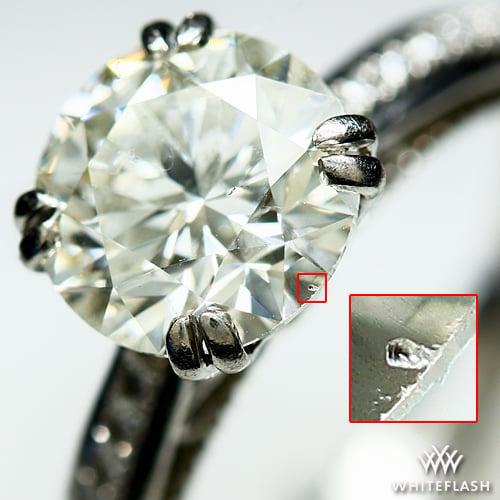
Worried About a Chipped Diamond?
Protect your jewelry with coverage from BriteCo, including protection against loss, theft, chips, and cracks.
Once you’ve filed a claim, use the PriceScope search to find a replacement diamond from one of our approved vendors, including Whiteflash, Blue Nile, and James Allen.
Okay, so you’ve got a chipped diamond. First thing’s first: don’t panic! It happens. Diamonds, despite being super hard, aren’t indestructible. Chipping usually occurs when a diamond takes a hit against something else that’s hard. Think banging your ring on a countertop, accidentally hitting it against another piece of jewelry, or even just everyday wear and tear. Certain diamond shapes, like princess cuts with their sharp corners, are more prone to chipping than others, like round or oval cuts. It’s all about those vulnerable points.
Basically, anything that puts pressure or impact on a diamond’s weak spots can cause a chip. It’s a bit like a tiny fracture, and once it starts, it can sometimes get worse.
Where do these chips usually show up? Well, the girdle (the edge around the widest part of the diamond) is a pretty common spot. It’s exposed and takes a lot of abuse. The points or corners of fancy-shaped diamonds are also prime targets. You might also find chips near the culet (the pointed bottom of the diamond, if it has one) or around the facets (the flat surfaces cut into the diamond). Basically, any edge or point is at risk. Here’s a quick rundown:
Not all chips are created equal. Some are tiny, barely noticeable nicks that don’t really affect the diamond’s integrity. Others are big, ugly gashes that can compromise the whole stone. The severity depends on a few things: size, location, and depth. A small chip on the girdle might be mostly cosmetic, while a large chip that extends deep into the pavilion (the bottom part of the diamond) could be a bigger problem. It’s important to assess the damage to determine the next steps. If you’re worried, it’s always best to get a professional opinion. Sometimes chips are minute and don’t pose any real danger to the longevity of the diamond, in that case, you might choose to ignore it and reset the diamond in a setting that offers better protection. If you have diamond rings, be sure to inspect them regularly for any damage.
That initial chip creates a weak point, and every bump or knock after that increases the risk of the chip getting bigger, or even worse, causing the diamond to crack. It’s like a tiny crack in your windshield – it starts small, but before you know it, it’s spread across the whole thing. Wearing a chipped diamond is basically asking for more damage. Think of it this way:
Ignoring a chip might seem like saving money in the short term, but it could cost you way more down the line if the damage escalates.
Beyond the risk of further chipping, a damaged diamond can also become a security risk in its setting. If the chip is near a prong or the setting itself, it can weaken the hold on the diamond. Even if only one prong is damaged, your diamond is no longer held securely in its mounting. This means there’s a higher chance of the diamond coming loose and, potentially, falling out altogether. Imagine losing your precious stone because of a chip you didn’t address! That’s a pretty awful thought, right? It’s not just about the aesthetic of the diamond; it’s about keeping it safe and sound.
Let’s be real: a chipped diamond is worth less than a flawless one. Even a small chip can significantly reduce its value. If you ever plan to sell or trade in your diamond, that chip will definitely be a factor in the appraisal. The severity and location of the chip will play a big role in how much the value decreases. A chip on the girdle (the outer edge) is generally less impactful than a chip on the table (the top facet), but any damage will affect the overall price. If you’re considering getting your diamond insured, the presence of a chip will also influence the insurance premium and coverage. It’s just something to keep in mind. Recutting a diamond to remove a chip can also lead to a loss of carat weight, which further reduces its value.
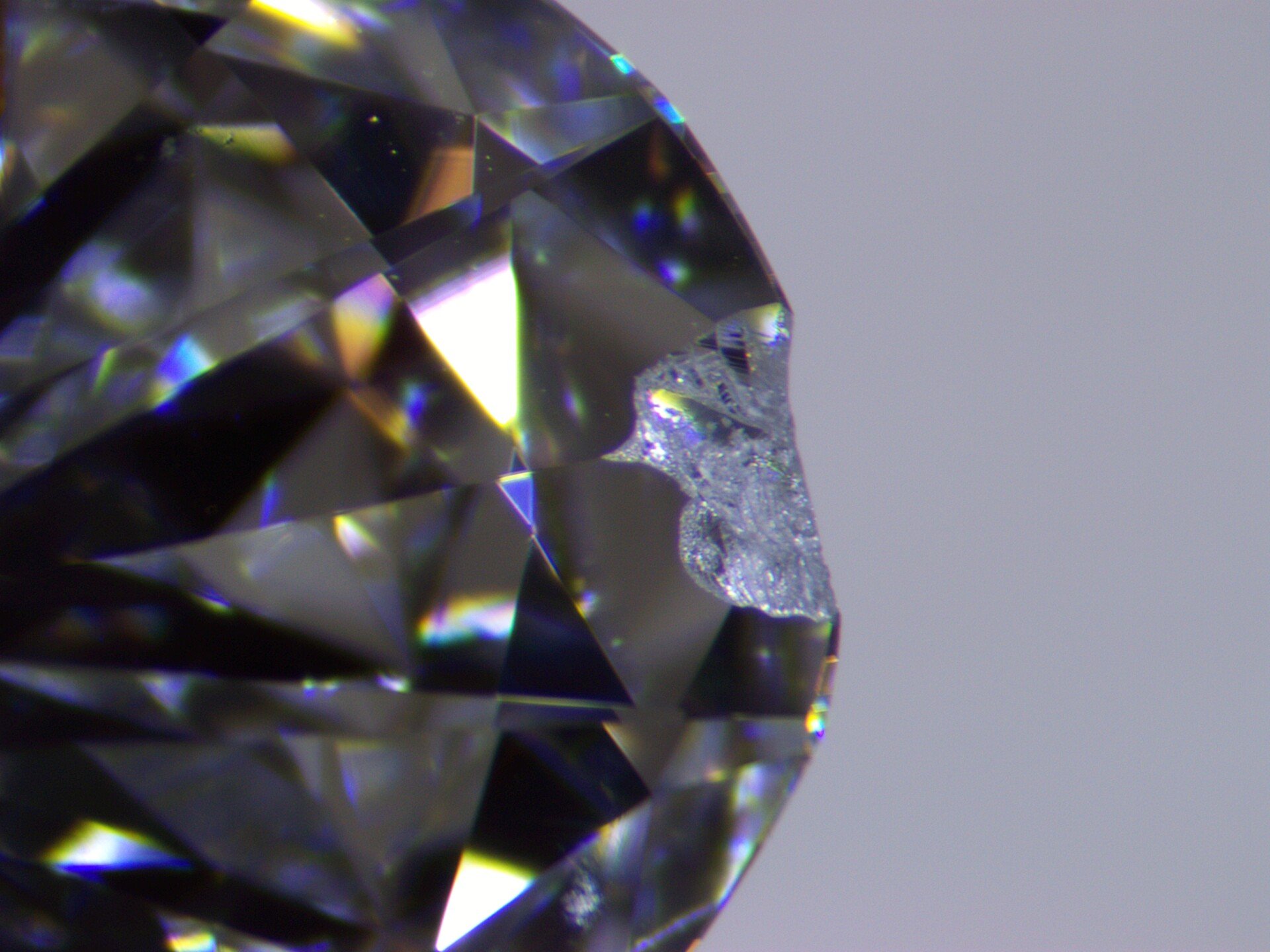
Dealing with a Chipped Diamond? You're Not Alone.
Join the PriceScope Community to get advice from experienced members, diamond experts, and trusted vendors. Learn your options, share your story, and get the support you need.
Taking good care of your diamond jewelry is key to keeping it safe from chips. Think of your diamond like any other valuable item; it needs protection. Here’s what I try to do:
Treat your diamond with respect. It’s not indestructible, and a little bit of care can go a long way in preserving its beauty and integrity.
The setting of your diamond plays a big role in how well it’s protected. Some settings leave the diamond more exposed than others. For example:
If you’re concerned about chipping, talk to your jeweler about choosing a setting that prioritizes protection. It might not be the flashiest option, but it could save you from heartache later.
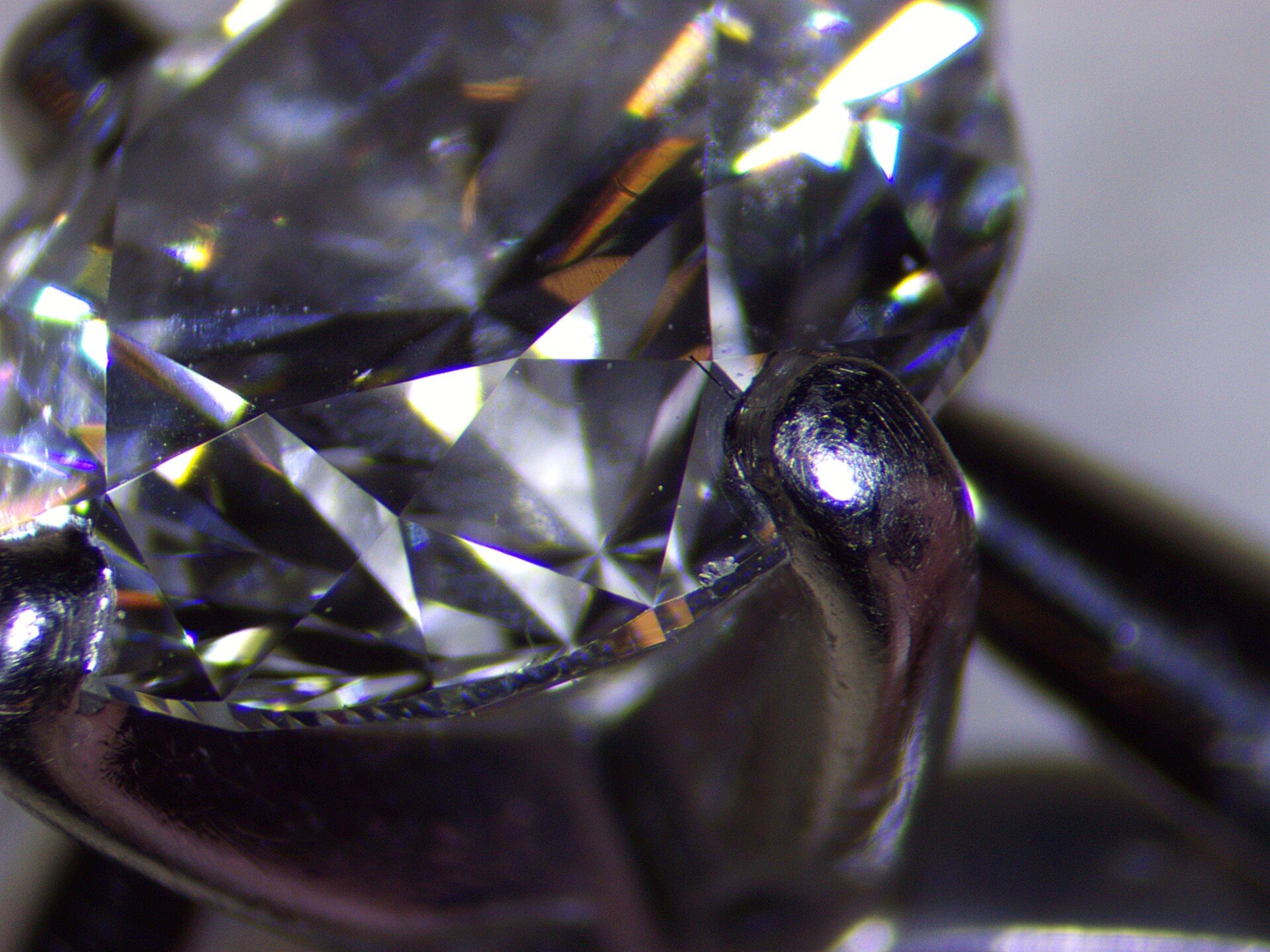
This one seems obvious, but it’s worth repeating: avoid wearing your diamond jewelry during activities where it’s likely to get banged around. I know someone who chipped their diamond while gardening! Here are some situations to be mindful of:
Basically, if you’re doing something that could potentially damage your diamond, err on the side of caution and remove it. It’s better to be safe than sorry. Remember, the shape of diamond can also affect its vulnerability.
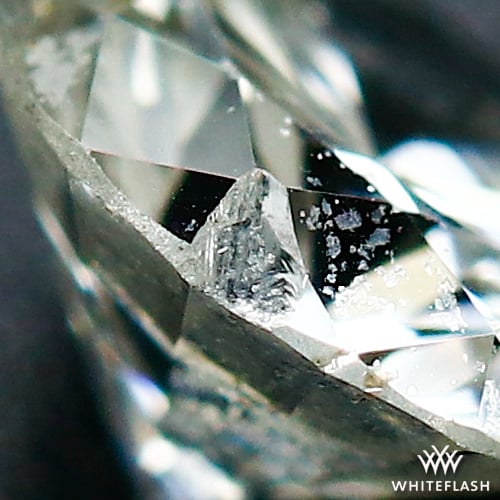
The first step is figuring out if it’s something you can ignore or if it needs professional attention. If you’re unsure, it’s always best to get a professional assessment. A jeweler or gemologist can tell you the extent of the damage and whether it poses a risk to the diamond’s integrity. If the chip is near a setting prong, or if you notice it’s getting bigger, definitely seek help ASAP.
A minor chip might be barely visible, only noticeable under magnification. These often don’t pose an immediate threat. Major chips, on the other hand, are easily visible and can affect the diamond’s appearance and structural integrity. Here’s a quick guide:
It’s important to remember that even a small chip can turn into a big problem if left unaddressed. Regular inspection of your diamond can help you catch issues early.
Diamonds aren’t perfect; most have inclusions, or internal flaws. These inclusions can sometimes make a diamond more vulnerable to chipping, especially if the inclusion is near the surface. A professional can assess the diamond’s overall structure and identify any weak points. Also, consider the setting. Is it protecting the diamond adequately? A bezel setting, for example, offers more protection than a prong setting. If you’re concerned about vulnerability, it might be worth exploring different evaluation reports for your jewelry.
So, you’ve got a chipped diamond. Bummer! Don’t panic, though. You have a few choices, and the best one depends on how bad the chip is and what you’re hoping to achieve. Let’s walk through them.
This is often the first thing people think of, and it can be a great option if the chip isn’t too big. Recutting involves reshaping the diamond to remove the damaged area. The goal is to restore the diamond’s brilliance and get rid of the chip. Repolishing is similar, but it’s usually for minor surface imperfections rather than actual chips. Keep in mind that you’ll likely lose some carat weight in the process, which means the diamond will be smaller. It’s a trade-off between size and appearance. Many vintage diamonds you see for sale have been repolished to look their best.
Sometimes, the chip is in a spot where you can hide it. If it’s on the edge (the girdle), a new setting might be all you need. A bezel setting, for example, wraps around the diamond’s edge, covering any chips and protecting it from further damage. You could also consider a pendant setting if the diamond is no longer suitable for a ring. This moves the diamond to a less vulnerable location. It’s like giving your diamond a bodyguard!
Okay, let’s say the chip is really bad, or the diamond has other issues. Recutting might not be worth it, and resetting won’t hide the problem. In this case, you might consider selling the diamond for salvage. There are companies that specialize in buying damaged diamonds and recutting them into smaller stones. You won’t get a ton of money for it, but it’s better than nothing. Sometimes, these salvage stones end up back in jewelry stores, so keep an eye out for hidden chips if you’re buying a bargain diamond.
It’s worth getting a professional opinion before making any decisions. A jeweler can assess the damage and tell you what your best options are. They can also give you an idea of how much weight you might lose if you recut the diamond, or how much a new setting would cost. Don’t be afraid to shop around and get multiple opinions!

Discovering a chip in your diamond jewelry can be disheartening, but if you have insurance, don’t panic! The first step is to carefully review your policy to understand the coverage details. Gather all necessary documentation, including the original appraisal, purchase receipts, and any photos of the damage. Contact your insurance provider to initiate the claim process. Be prepared to provide a detailed description of how the damage occurred. Remember, honesty is key. The insurance company may request an independent assessment of the chipped diamond to verify the damage and its cause. If you’re unsure about the process, consider seeking advice from a jewelry professional or a public adjuster.
Need to Replace a Chipped or Lost Diamond?
The PriceScope Community can help. Get guidance on filing an insurance claim and connect with pre-approved vendors like Whiteflash, James Allen, and Blue Nile to find the perfect replacement.
Not all insurance policies are created equal, so understanding your specific coverage is essential. Some offer comprehensive protection, covering accidental damage, loss, and theft, while others may have limitations or exclusions. For example, some policies might not cover damage caused by wear and tear or pre-existing conditions.
Pay close attention to the deductible — the amount you’ll need to pay out of pocket before coverage begins — and the policy limits, which cap the maximum payout for a claim. If your engagement ring policy includes a replacement clause, it may offer more value than a repair option, especially if the damage is extensive.
For specialized jewelry insurance, BriteCo is a popular option among PriceScope users, offering coverage tailored to fine jewelry, including protection for chipped or lost diamonds.
When faced with a chipped diamond, you’ll likely have two main options: replacement or repair. The best choice depends on several factors, including the severity of the damage, the value of the diamond, and the terms of your insurance policy. Here’s a breakdown to help you decide:
Ultimately, the decision to replace or repair a chipped diamond is a personal one. Consider the pros and cons of each option, and consult with a qualified jeweler and your insurance provider to make an informed choice. Remember that recutting can lead to loss of carat weight, which impacts value.
One option is recutting. This involves a skilled diamond cutter reshaping the stone to remove the chip. The goal is to restore the diamond’s brilliance and overall appearance. However, it’s not always a straightforward decision. Recutting is more suitable for larger, more valuable diamonds where the loss of carat weight is less impactful. For smaller diamonds, the cost of recutting might outweigh the benefit. It’s also worth noting that diamonds with vintage cuts can be given new life through recutting, preserving their sentimental value.
Here’s the thing about recutting: it almost always means losing some of the diamond’s weight. How much? Well, it depends on the size and location of the chip. Minor chips might only result in a loss of 0.02 to 0.10 carats. But larger chips could mean a more significant reduction. Before you commit to recutting, it’s important to weigh the potential loss of carat weight against the improvement in appearance. A smaller, flawless diamond might be more valuable than a larger, chipped one, but it’s a case-by-case thing. If the recutting results in a significant size reduction, you might also need to alter the diamond setting.
Ultimately, the aim of repairing a chipped diamond is to bring back its sparkle and make it wearable again. A chip isn’t just an aesthetic issue; it can also make the diamond more vulnerable to further damage. Recutting or repolishing can address both of these concerns. Repolishing is a good option for surface-level scratches, while recutting is necessary for more significant chips. The process involves carefully grinding and polishing the diamond to remove the imperfection and restore its original facets. If you’re considering recutting, be sure to consult with a reputable jeweler who specializes in diamond and gemstone services. They can assess the damage and advise you on the best course of action.
Getting your diamond repaired is a good idea to avoid further damage. These stones are made to be worn and enjoyed, so having them expertly repaired so that you can wear them with confidence is the best approach.
So, we’ve talked a lot about chipped diamonds. It’s pretty clear they’re not invincible, even though they’re super hard. You might accidentally hit your ring on something, or maybe there was a tiny flaw from the start. The good news is, a small chip doesn’t always mean your diamond is ruined forever. Sometimes, it can be fixed up, maybe even look new again. But sometimes, the damage is just too much. The main thing is to know your options, like checking your insurance or talking to a jeweler. Taking care of your diamond is important, so you can keep enjoying its sparkle for a long time.
Diamonds are super tough, but they’re not unbreakable. They can chip if they get hit hard in just the right spot, especially on their thin edges or pointy parts. Think of it like hitting a glass with a hammer – even strong glass can break if you hit it wrong.
The most common places for a diamond to chip are its edges, called the girdle, or its pointed corners, especially on shapes like princess or pear cuts. These areas are thinner and more exposed, making them more likely to get damaged if they bump into something hard.
If your diamond has a chip, it’s best to stop wearing it right away. A small chip can get bigger and cause more damage if you keep wearing the ring. It’s like a tiny crack in a window – it can spread if you don’t fix it.
Sometimes, a chipped diamond can be fixed by carefully reshaping and polishing it. This might make the diamond a tiny bit smaller, but it can make it look new again. If the chip is really big, it might not be fixable, or it might lose too much of its size.
To help prevent chips, try to take off your diamond ring when you’re doing things that might involve hitting it, like gardening, exercising, or cleaning. Also, choosing a ring setting that protects the diamond’s edges, like a bezel setting, can help a lot.
If your diamond is chipped, the first thing to do is check your jewelry insurance. Many policies cover accidental damage. If you’re covered, your insurance company might help pay for the repair or even replace the diamond. If not, a jeweler can tell you if it’s possible to fix it.
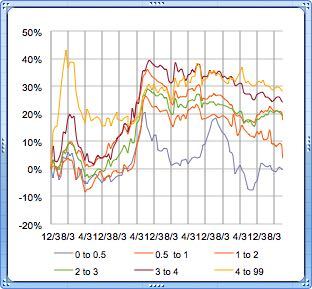
Retail Diamond Prices Chart Updated Monthly.
Two Paths, One Diamond Not all diamonds come from the same place — but they all start the same way. Pure carbon, crystalized under immense pressure and heat. Whether it…
A Wedding Ring as Unique as Your Love Finding the right wedding ring isn’t just about diamonds or gold – it’s about finding the one that feels right. With hundreds…
So, you’re thinking about lab-grown diamonds? Smart move. They’re just as sparkly as the natural kind but usually cost less. But where do you actually go to buy them? It…


Want to stay updated on the most recent blogs, forum posts, and educational articles? Sign up for Bling News, PriceScope’s weekly newsletter.